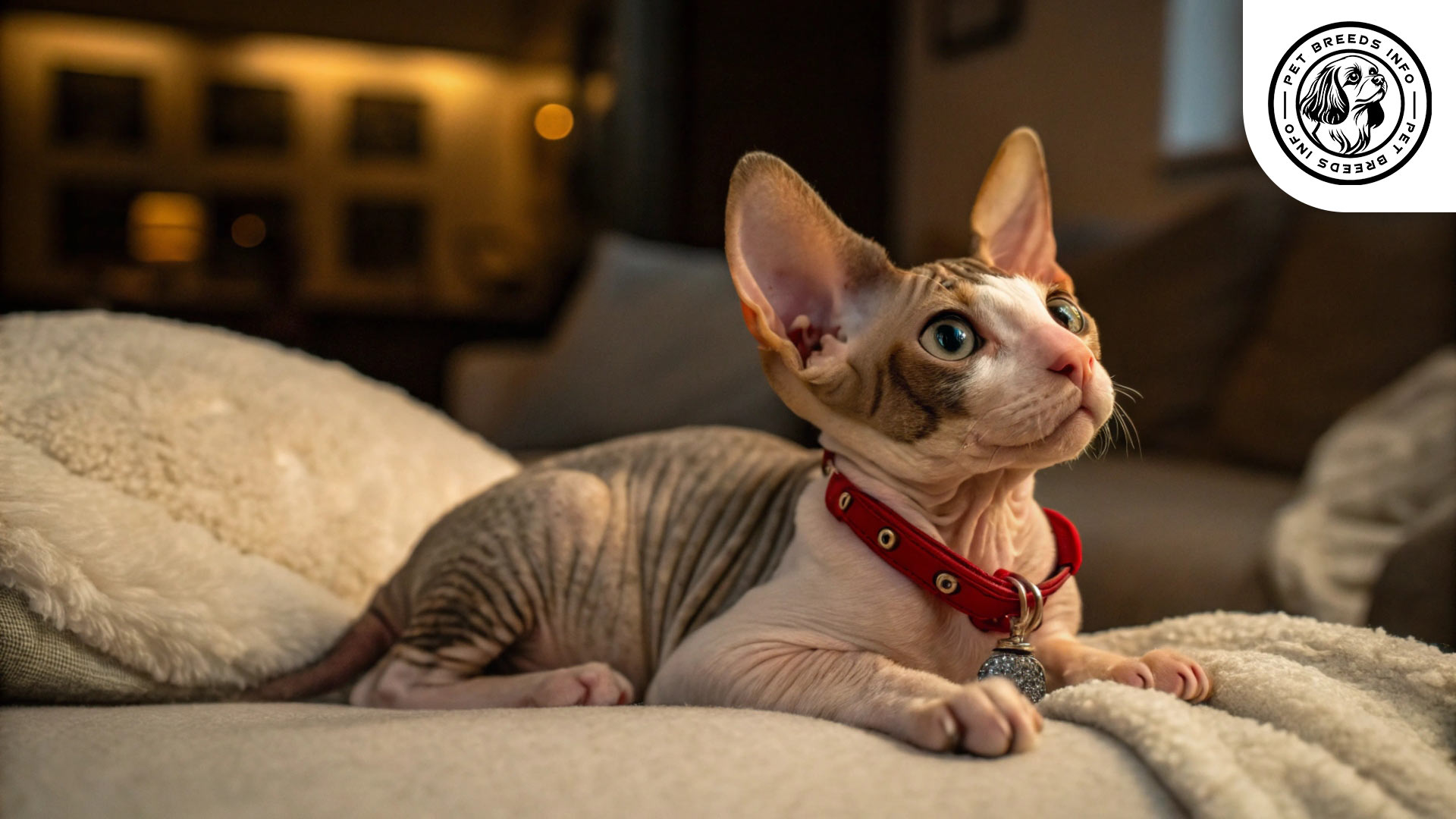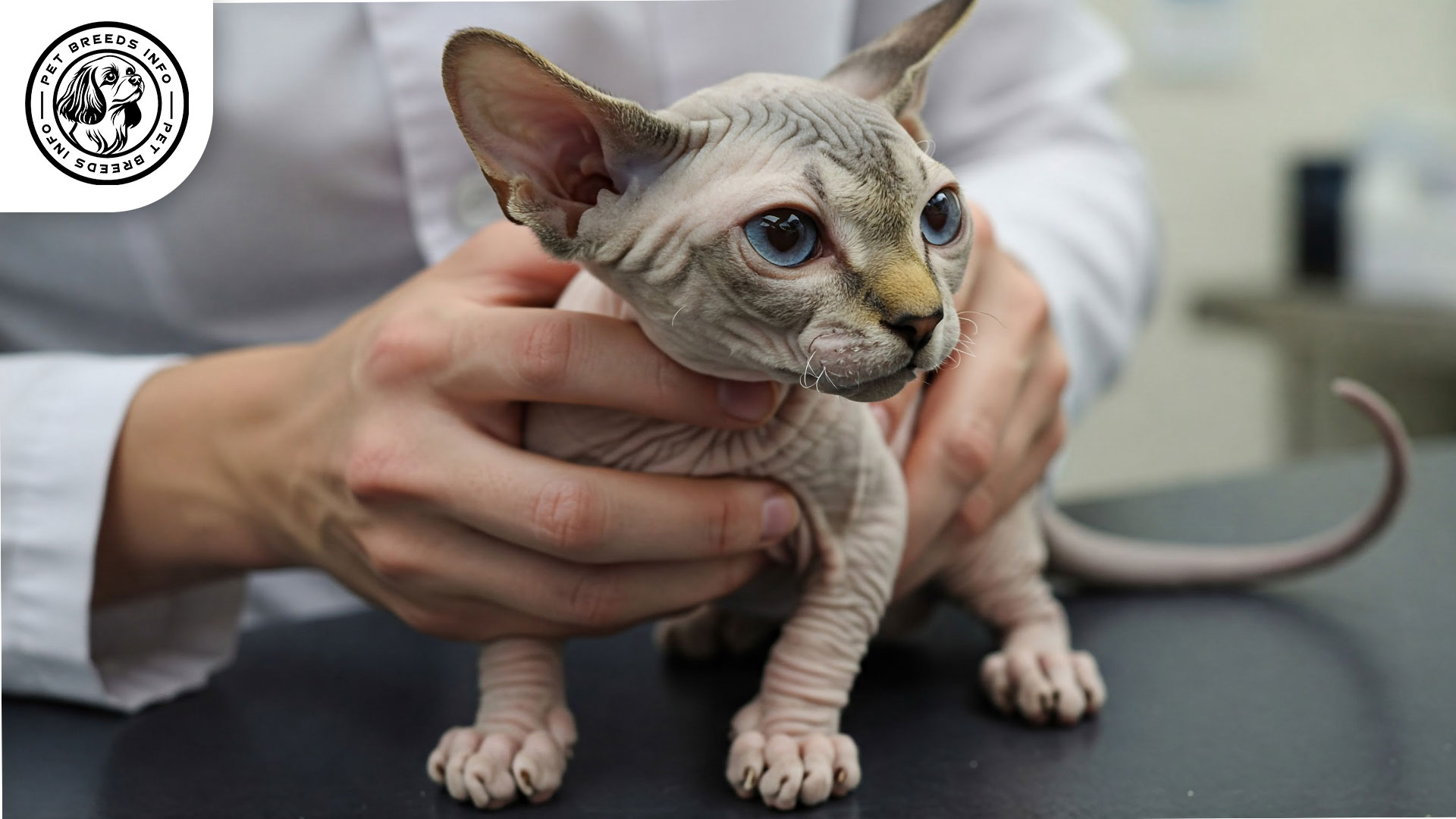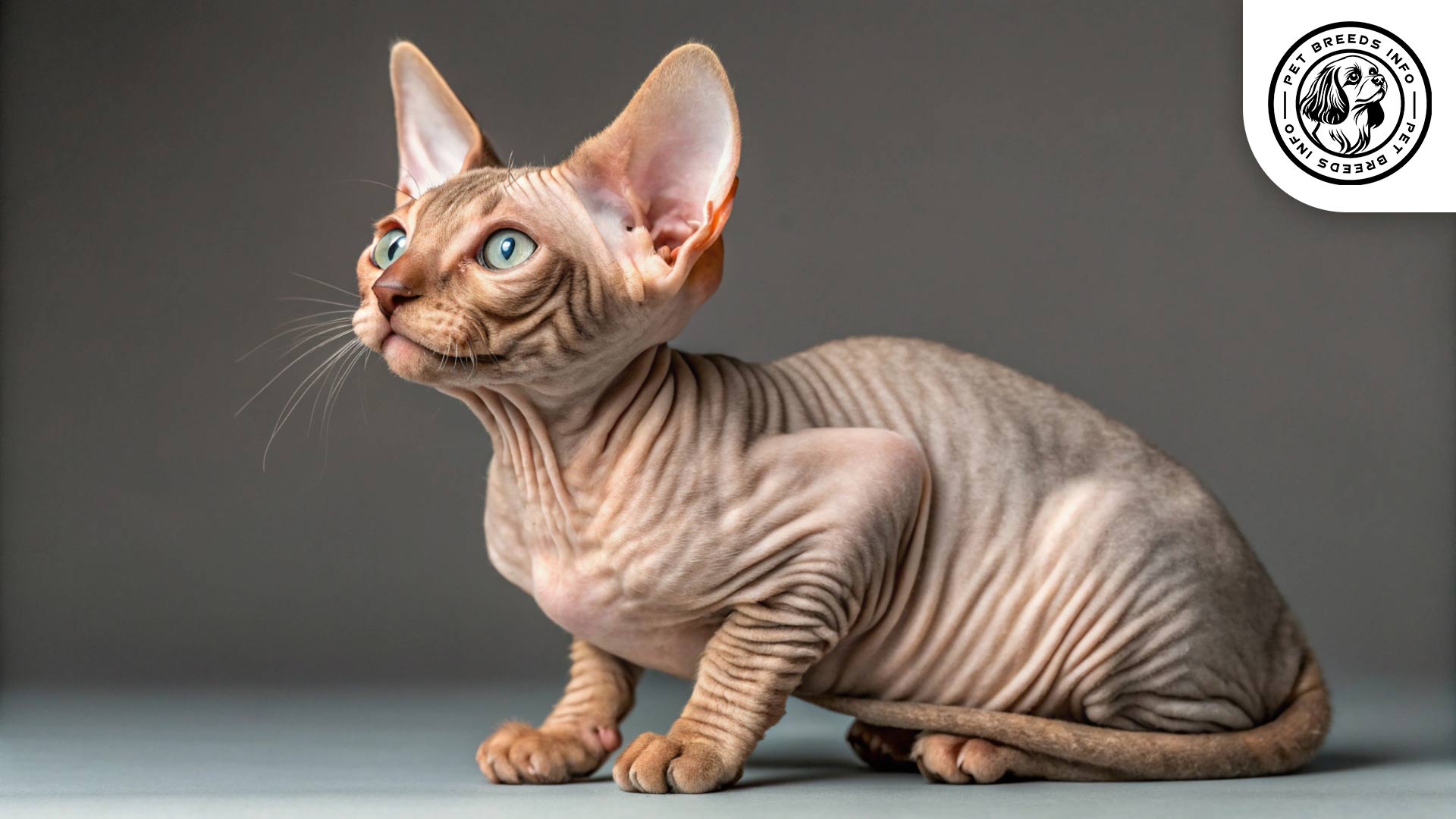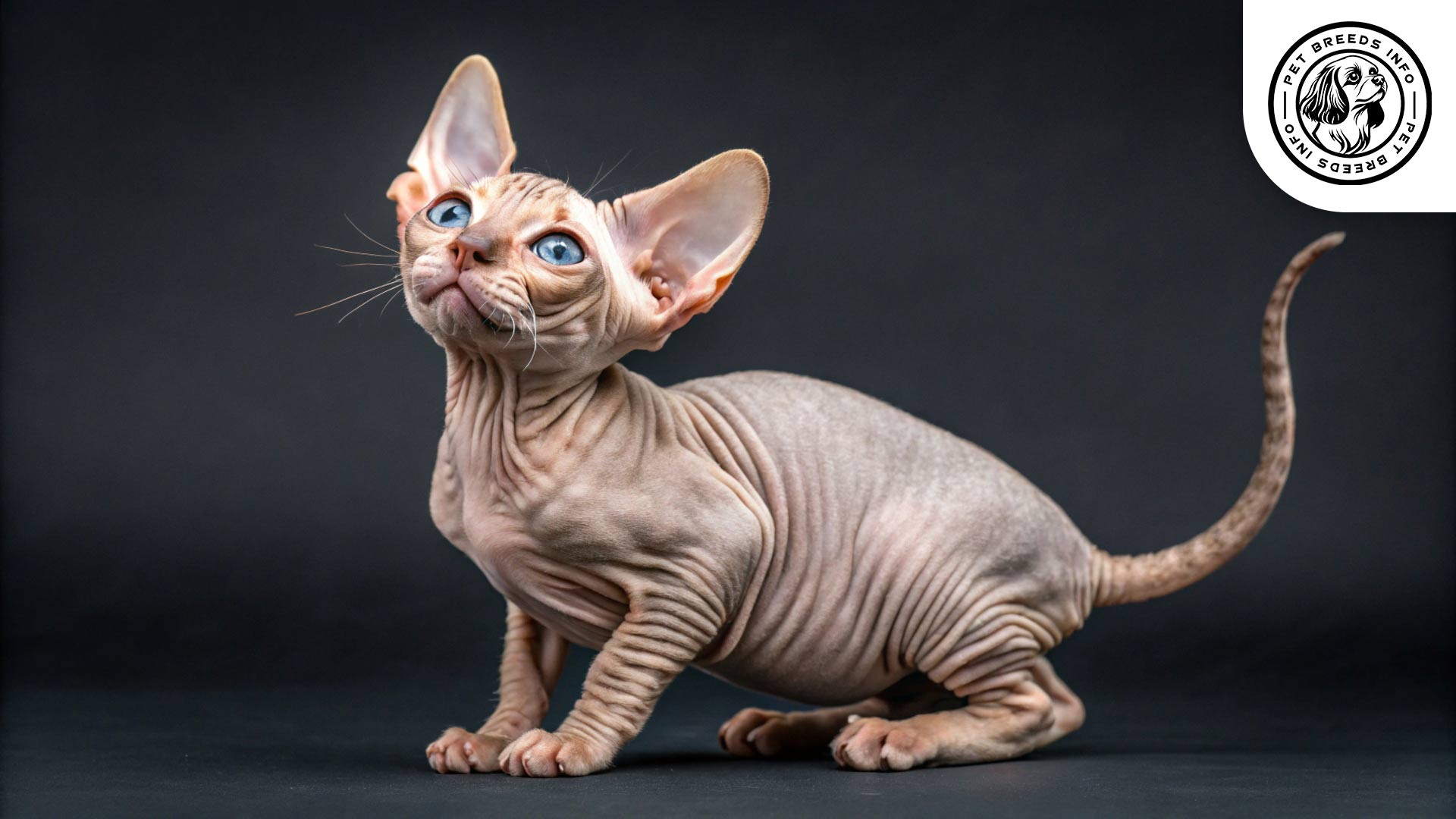Bambino Cat Breed: Size, Health, Price & Personality
General Introduction of the Breed
The Bambino is a unique and rare breed of domestic cat, known for its hairless body and short legs. The breed name “Bambino” comes from the Italian word for “baby,” reflecting its small and adorable appearance. The breed originated in the United States.
The Bambino was developed in the early 2000s as a crossbreed between the Sphynx and the Munchkin cat. It was specifically bred to combine the hairlessness of the Sphynx with the short-legged stature of the Munchkin, creating a visually distinctive and affectionate companion. Although not officially recognized by all major cat registries, the breed has gained popularity among cat enthusiasts.
Bambino cats are affectionate, playful, and social, with unique hairless, short-legged looks. High care needs but loving companions. Quick Overview
Affectionate - 90%
Independent - 20%
Intelligent - 85%
Sociable - 95%
Vocal - 60%
Shedding - 5%
Energetic - 80%
62%
100
| Weight | Males: 5-9 lbs (2.3-4 kg), Females: 4-7 lbs (1.8-3.2 kg) |
| Lifespan | 12-15 years |
| Color | Various colors and patterns, including solid, bicolor, tabby, and pointed. |
| Diet | High-quality dry or wet cat food, raw or homemade diets (with vet consultation), avoid chocolate, onions, garlic, dairy, artificial sweeteners |
| Care | Regular baths, nail trimming, ear cleaning, dental hygiene, protection from sun and cold, regular play and exercise |
| Health | Potential for lordosis, skin sensitivities, increased risk of obesity and joint issues, regular veterinary checkups |
| Nature | Affectionate, playful, intelligent, social, enjoys human interaction, not independent |
| Price | $1,500 – $3,000 |
Table of Contents
Physical Characteristics
The Bambino is a small to medium-sized cat. Males typically weigh between 5 to 9 pounds (2.3 to 4 kg), while females usually weigh between 4 to 7 pounds (1.8 to 3.2 kg). These cats have a compact and muscular build, with a short spine and sturdy legs.
One of the most defining features of the Bambino is its hairless body. However, some may have a fine peach-fuzz-like coat. They come in various colors and patterns, including solid, bicolor, tabby, and pointed.
Their eyes are large, round, and expressive, coming in a wide range of colors such as blue, green, gold, or odd-eyed (each eye a different color). Their ears are large, upright, and slightly rounded at the tips, accentuating their alert and curious expression.
The tail is long, slender, and flexible, often with a slight taper. Some Bambinos may have faint wrinkles on their body, adding to their distinctive appearance.

Personality and Temperament
The Bambino is an intelligent and playful breed, known for its affectionate nature. They are quick learners and enjoy interacting with humans. Their energy levels are high, and they love to engage in games, climbing, and running despite their short legs.
They are highly attached to their owners and thrive on attention. Bambinos do well in families of all sizes, including homes with children and other pets. They enjoy socializing and are not typically solitary cats.
These cats have a playful and mischievous streak, making them fun companions. Because they lack fur, they are sensitive to changes in temperature and prefer warm environments.
Read More: American Bobtail
Care and Maintenance Requirements
Bambinos require regular play and exercise to stay active. Despite their small stature, they enjoy climbing, jumping, and running. They adapt well to apartment living but appreciate having ample space to explore.
Grooming is essential due to their hairless nature. They need regular baths to remove oil buildup on their skin. Shedding is minimal, but their skin requires gentle cleaning. Sun exposure should be avoided to prevent sunburn, and cold weather requires protection such as sweaters or warm bedding.
Routine hygiene care includes trimming nails, cleaning ears to prevent wax buildup, and maintaining good dental hygiene with regular tooth brushing.
Diet and Nutrition
A balanced diet is essential for Bambinos. High-quality dry or wet cat food is recommended, with options that provide sufficient protein and fat. Some owners opt for raw or homemade diets, but consultation with a veterinarian is advised.
Because Bambinos have a fast metabolism, they may require more frequent feeding than some other cat breeds. Small, regular meals work best. Foods to avoid include chocolate, onions, garlic, dairy, and artificial sweeteners.
Read More: Asian Semi-longhair
Health and Common Medical Issues
As a mixed breed, Bambinos may inherit health issues from their parent breeds. Common concerns include lordosis (spinal curvature) from the Munchkin lineage and skin sensitivities from the Sphynx. They may also have an increased risk of obesity and joint issues.
The average lifespan of a Bambino ranges from 12 to 15 years. Regular veterinary checkups, vaccinations, and preventative care are essential to maintain their health.

Training and Behavior Management
Bambinos are relatively easy to train due to their intelligence and curiosity. They respond well to positive reinforcement techniques such as treats and praise.
Early socialization is important to ensure they develop well-rounded behaviors. Providing interactive toys and scratching posts can help manage their playful and energetic nature.
Interaction with Other Animals and Humans
Bambinos are affectionate and social cats that do well with families, children, and other pets. They form strong bonds with their owners and enjoy companionship.
Due to their playful and friendly demeanor, they are best suited for owners who can provide plenty of attention. They are not highly independent and may suffer from separation anxiety if left alone for extended periods.
Read More: Australian Mist
Price and Availability
The Bambino is a rare breed, which influences its price. The cost of purchasing a Bambino kitten typically ranges from $1,500 to $3,000, depending on lineage, breeder reputation, and location.
When buying or adopting a Bambino, it is important to choose a reputable breeder who conducts health screenings. Some rescue organizations and specialty cat shelters may occasionally have Bambinos available for adoption.

Conclusion and Final Thoughts
The Bambino is a unique and affectionate breed, best suited to owners who can provide plenty of attention and care. Their playful and social nature makes them a great choice for families, singles, and seniors alike.
Prospective owners should be prepared for their grooming and hygiene needs, as well as their sensitivity to temperature changes. Their charming personality and striking appearance make them a wonderful companion for the right home.
FAQ
What are the main characteristics of a Bambino cat?
Bambinos are known for their hairless body and short legs, a result of crossing Sphynx and Munchkin breeds. They have a small to medium build, large eyes, and a friendly, affectionate temperament.
How much grooming does a Bambino cat require?
Frequent baths are needed to manage skin oil, along with nail trimming, ear cleaning, and dental care. They require protection from sun and cold due to their hairlessness.
What are some common health concerns for Bambino cats?
Potential issues include lordosis, skin sensitivities, obesity, and joint problems. Regular veterinary care is crucial for their 12-15 year lifespan.
How much does a Bambino cat typically cost?
Bambino kittens cost $1,500-$3,000 from reputable breeders. Adoption from rescues or shelters is a less common but possible option.
What is the typical temperament of a Bambino cat?
Bambinos are affectionate, playful, and social, thriving on human interaction and adapting well to families and other pets. They are intelligent and energetic.
